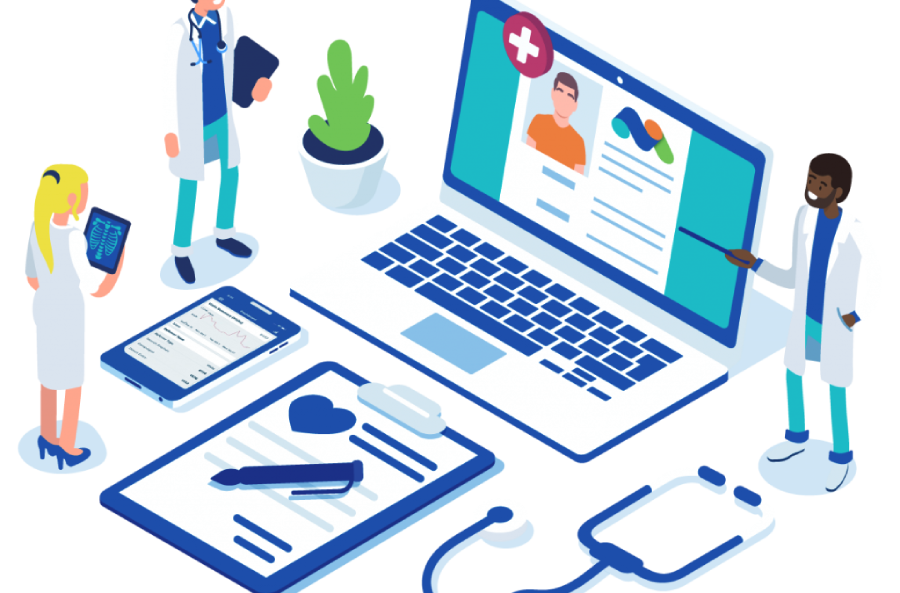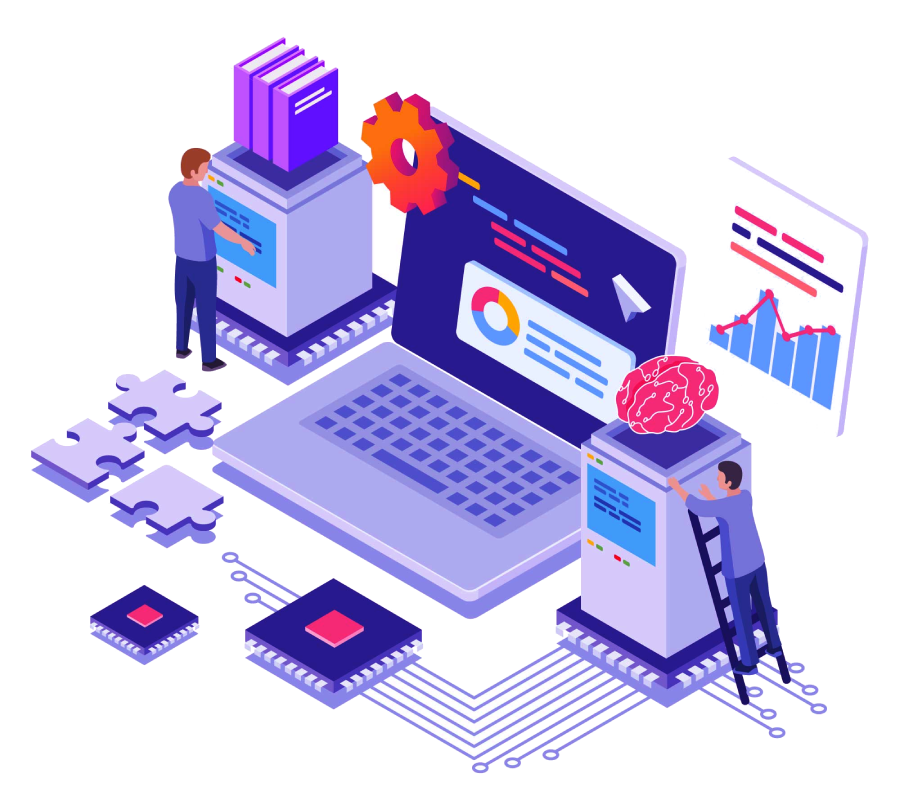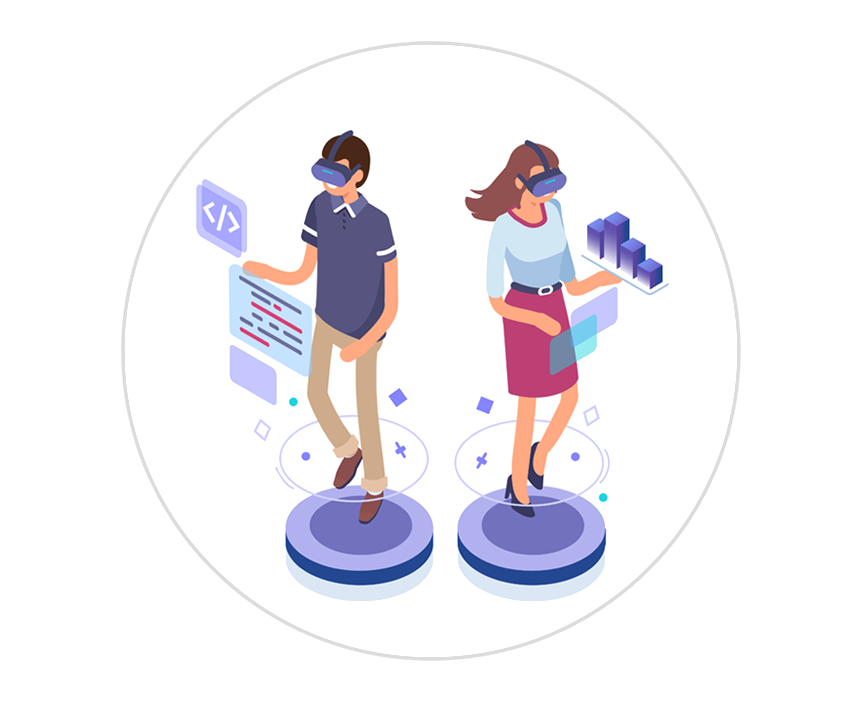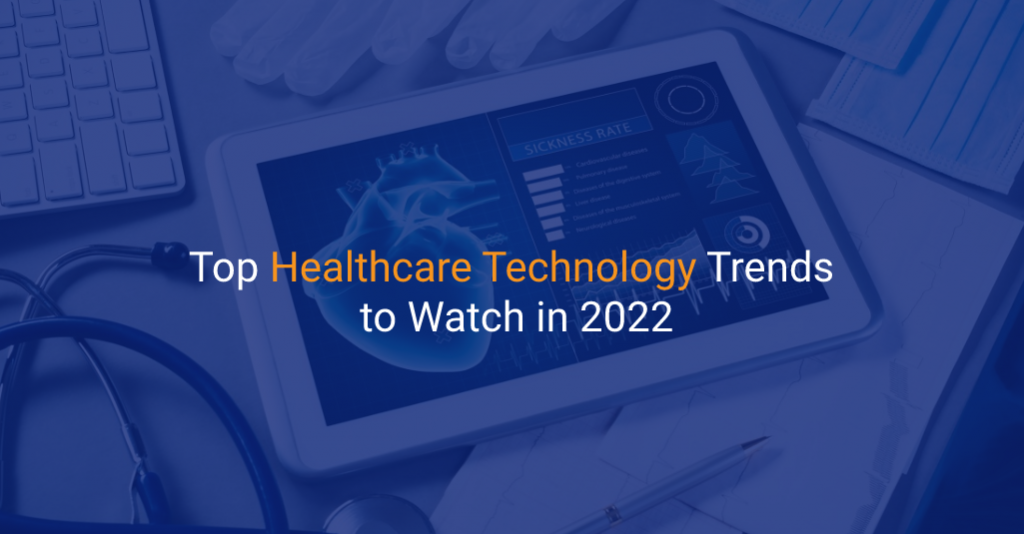Even before 2020, the healthcare business was embracing technology at different levels, however, the pandemic increased its reliance on technology even further. The worldwide health app industry is expected to reach $125 billion by 2028, up from roughly $2.4 billion in 2017.
According to HIMSS Future research, 80% of providers are prepared to invest more in innovative technology and digital solutions rather than old approaches.
This blog will go through the top eight healthcare technology trends for 2022.
Let’s just get started.
1. Remote Healthcare
Telehealth is another term for remote healthcare. Telehealth is a modern medical technology that is widely utilized across the world.
With the use of telehealth, you may contact your doctor without leaving your home, which is extremely advantageous for many categories of patients, including the elderly, patients from remote locations, and others.
Aside from consulting, telehealth may be employed in a variety of ways.

- Location-based services
- Take a look at history.
- Medical documentation
- Communicating with the patients
- Emergency treatment
- Obtaining reports depending on a time frame, such as monthly or yearly reports
The doctor will be able to monitor their patients’ activity and give necessary services as needed. Telehealth also lowers the cost of hospital visits and commuting time.
According to studies, around 60% of US individuals over the age of 65 are prepared to have their long-term diseases treated digitally. With high demand, the telehealth business is expected to reach a market value of 186 billion dollars.
Many pharmaceutical firms use health apps and software to communicate with trial participants, and the need is growing year after year.
2. Internet of Medical Things (IoMT)
The internet of medical things refers to a collection of internet-connected medical equipment, hardware, or software technologies that are linked over the internet.
A huge volume of data can be used to detect chronic or critical diseases early on.
There is also the prospect of IoMT, such as smart robot nurses, which are already used in Italian hospitals to monitor patients’ blood pressure and SpO2 levels during covid crises.
As per Deloitte, there are over 500,000 IoMT devices on the market; such examples include:
- Smart beds
- Smart wearables
- Automated temperature readers
- Smart pills - Ingestible sensors or cameras
- Internet-connected inhaler delivery systems
It is anticipated that the IoMT market would be worth $1319 billion by 2026.
IoMT is unquestionably one of the most promising and rising healthcare technology concepts for the future.
Looking for the best healthcare software development company in India?
3. Nanomedicine
Nanomedicine is described as the utilization of nanoparticles or nano-objects in the medical business, such as nanorobots or other nanoscale materials.
Nanomedicine is among the most promising future medical professions. Nanomedicine is extremely useful in cancer therapy and target medication injection.
The nanomedicine sector is expected to be worth more than 125 billion dollars by 2024.
4. Smart Wearables
According to statistics, one in every five Americans wears a fitness tracker. It is anticipated to rise to one in every three.
Smartwatches and fitness trackers can do the following:
- Smart beds
- Keep track of your pulse.
- Keep track of your ECG reports.
- Keep track of your blood oxygen levels.
- Because blood oxygen levels are critical, the watches can measure them and perhaps assist save lives.
To save data, all smartwatches use either Android or iOS applications.
Without the use of a smartwatch, smart bio patches can monitor your blood vitals.
The worldwide health wearable market is anticipated to reach $195.57 billion by 2027.
5. AI in Healthcare

Artificial intelligence is pervasive, infiltrating every business imaginable. There are several benefits to implementing AI and ML.
Here is a list of how artificial intelligence has changed the healthcare industry:
- Next-generation radiological instruments with automated prediction are being developed.
- AI will aid in the expansion of healthcare services to many underdeveloped and inaccessible areas.
- AI can assist many competent professionals, such as nurses, with their recordkeeping and diagnostic activities.
- AI is frequently employed in effective diagnosis and decreases diagnostic mistakes.
- Cancer can be detected early by medical professionals.
- Using AI to manage and migrate medical data.
By 2028, the artificial intelligence sector is expected to be worth $120 billion.
Looking for the best healthcare software development company in India?
6. Virtual Reality and Augmented Reality
Virtual and augmented reality are benefiting healthcare workers in a variety of ways, from assisting with operations to teaching new experts.
Surgeons can do surgery with both hands more precisely by utilizing VR and AR technology. Other physicians can also use the VR lens to provide useful ideas during the procedure.
They also assist nurses in locating veins to target while drawing blood. Augmented reality delivers the same real-life experience that doctors utilize in training for more practice and accuracy.
By 2023, the virtual and augmented reality industry will be worth $4997 million.

Strengthen connectivity to the healthcare organization through Digital Transformation/Automation solutions!
7. Predictive Analysis
Predictive analytics is a technique for improving health care. Machine learning algorithms may be trained to provide insight to treat future patients by leveraging data and results from previous patients.
Collecting data from several IoMT and including AI and ML in data analysis will offer and forecast data and results in advance.
The following are some of the benefits of predictive analysis:
- Enhanced patient care
- More rapid diagnosis
- More rapid medication development
- Significant respite for healthcare employees
- Improved emergency decision-making
8. Bioprinting
3D printing is not a novel technique in the healthcare business. However, it will be utilized widely in fields other than surgery in the future.
The following are the benefits of bioprinting:
- It makes difficult procedures simpler to conduct.
- Production takes relatively little time.
- Trainers will need more practice.
- More customizability than other approaches for external implants such as prosthetic legs.
- Cost-effective
Conclusion
These are the top 8 healthcare technology developments that will transform the healthcare business.
Because of the intricacy of product creation, healthcare software is a domain with minimal competition.
As a result, it is an excellent moment to invest in healthcare technology or develop healthcare-related goods. Know the most crucial aspects required while designing a healthcare app if you want to establish a winning industry-specific healthcare solution.
You can also contact our technical staff for assistance in developing your product effectively. We’d be happy to assist!



